News From the Festival
Performing Large Shakespeare Plays in a Small Theatre

The Eileen and Allen Anes Studio Theatre
By Parker Bowring
For the 2020 season, the Utah Shakespeare Festival will present Cymbeline, Shakespeare’s rarely performed romance. Cymbeline is a large play in setting, plot, and character—and the Festival has chosen to perform it in the rather small, 200-seat Eileen and Allen Anes Studio Theatre. Of course, performing a large play in a small theatre comes with challenges, but with great rewards. The Festival artists and administrators chose the Anes Theatre because they wanted to reimagine Cymbeline and create a more active experience for this heart-rending play.
Set in the classic country of Great Britain, Cymbeline explores a king who banishes his daughter’s husband to the ancient city of Rome. This diverse and evolving plot is filled with soldiers, woodsmen, ghosts, and evil stepmothers as the characters fight for love, truth, and honor. The Anes Theatre will put the audience close to the action, on three sides of the stage.
“The space is intimate, it asks the audiences to engage and lean forward, the work here [in the studio theatre] is contemporary and takes risks. . . . I’m thrilled that Cymbeline is being produced in this space,” said Britannia Howe, the director.
The studio stage is smaller, creating a more intimate setting for both the audience and actors in Cymbeline. This allows the actors to interact with the audience and create a more personal experience with a play this large.
With more than a dozen characters and five acts, Cymbeline is not a small production. So this is a chance for the Festival and its audiences to break boundaries and reimagine productions to create a lasting impression. As imagined by Howe and her creative team, “Cymbeline is an epic story that we are telling with eight actors in a trunk-show performance” said Howe. A trunk-show typically uses one trunk to house many of the props and costumes. That is not the case with Cymbeline. The play will have several different trunks and suitcases that will hold the props and costumes.
“Using the device of a trunk show, we will be clever with our elements of artistry for the production,” continued Howe. “I’m very excited about this as the design team and I have already found clever ways to add wonder inside the trunks and suitcases. I also love this idea that all of these characters carry baggage figuratively. The luggage trunks will not only house Iachimo in Act 2 Scene 2, but will solve other challenges the show carries,” said Howe.
Because a studio theatre set can easily be rearranged and reconfigured to fit each scene of the production, this unique stage allows for the play to have a diverse setting, with props and the background more minimal in order to not obstruct the sight of the audience. According to Howe, “Cymbeline is a manuscript of wonder and the design is purposefully minimal to encourage audiences to find imagery within the text. The play moves very quickly through many settings.”
In Howe’s early director’s notes she said: “Cymbeline is a celebration of storytelling. A comedy, written in Shakespeare’s last years, it is full of humor and mystery. This play is about the search and reunion of family,” she wrote. In the end, Imogen “is overjoyed that she has found a family. There is a purpose in having an ensemble-type show telling a story about characters who are foraging for connection and reconciliation.”
Festival Hires Director of New Play Development/ Artistic Associate

The Utah Shakespeare Festival is excited to announce the hiring of Derek Charles Livingston as director of new play development/artistic associate. In this newly-created position, Livingston will be responsible for re-envisioning and overseeing the Festival’s new play program, Words Cubed, as well as other artistic and senior staff duties.
“I could not be more excited to welcome Derek to the staff of the Festival. His experiences and talents developing new plays, and as an actor and director, will contribute much to the artistry of the Festival,” said Executive Producer Frank Mack. “We have sought to expand our new play development series, Words Cubed, for a long time; and I have never felt more confident in our ability to bring great new stories to stages at the Festival and beyond than I do now that we have Derek’s amazing skills to help lead that work.”
For the past few years, Livingston’s primary artistic work has been as an actor. Las Vegas (where he currently resides) audiences have seen his work in Thurgood, The Pillowman, and The Whipping Man. Last year he was awarded the New Hampshire Drama Award for Leading Actor in a Professional Play for his portrayal of Hoke in Driving Miss Daisy.
Prior to that, Livingston was primarily a theatre director, producer, and new play developer. He served for over four years as the managing artistic director of Los Angeles’s Celebration Theatre (the country’s second oldest, continuously operating LGBT-focused theatre). During that time and after, he produced and/or directed several acclaimed plays and musicals; those productions received over fifty Los Angeles theatre awards or nominations (including acknowledgements for Derek’s directing work on five productions). Later he lived in San Diego where he produced or co-produced a host of new play festivals, helping give life to over forty new plays. For San Diego’s Diversionary Theatre, he directed the award-nominated San Diego premiere of Tru, depicting the life of Truman Capote.
“I am both humbled and excited about the opportunity to serve the Festival as its director of new play development and as an artistic associate,” said Livingston. “To be entrusted by this great institution with stewarding works of new, diverse theatre voices, while simultaneously keeping one of the theatre’s greatest voices alive, is an honor I take very seriously. I am eager to begin this great journey of words and wonder.”
Separate from the arts, Livingston has had an extensive career in social justice work. He served as a case manager to homeless men in recovery, a group facilitator in domestic violence re-education programs, an HIV prevention educator, an executive director of a statewide LGBT political action committee, and one of four national leaders for the 1993 March on Washington for Lesbian, Gay, and Bi Equal Rights and Liberation.
Livingston will join with Festival Stage Manager/Artistic Associate Tanya J. Searle in rounding out the artistic team led by Artistic Director Brian Vaughn.
“I am incredibly excited to welcome Derek to the Festival’s artistic team,” said Vaughn. “Derek brings a wealth of experience and insight into the work of new play development, and his exciting vision for the Festival’s Words Cubed New Play Programand its continued cultivation of new plays and playwrights within the Festival’s traditionally classical repertoire is a welcome addition. I greatly look forward to his collaboration as well as his stewardship and oversight of the program.”
Livingston will begin work at the Festival on April 15.
Education Tour of Julius Caesar Goes Online
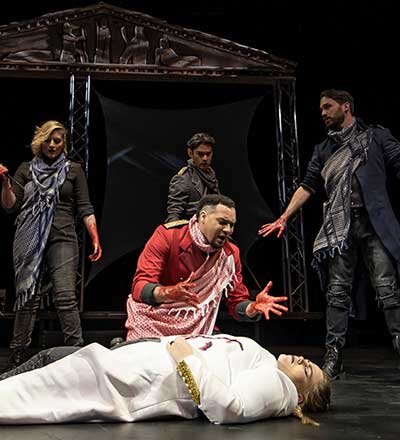


Kenna Funk (left) as Casca, Gilberto Saenz as Metellus, Cordell Cole as Marc Antony, Bailey Savage as Julius Caesar, and Jeremy Thompson as Brutus in the education “tour” of Julius Caesar. (Photo by Shane Egan.)
Isabella Abel-Suarez (left) as Lucius, Kenna Funk as Casca, Jeremy Thompson as Brutus, Daria Pilar Redus as Cassius, Cordell Cole as Marc Antony, Bailey Blaise as Octavius, and Gilberto Saenz as Lepidus in the education “tour” of Julius Caesar. (Photo by Shane Egan.)
Jeremy Thompson (left) as Brutus, Gilberto Saenz as Metellus, Isabella Abel-Suarez as Cinna, Daria Pilar Redus as Cassius, Kenna Funk as Casca, and Bailey Blaise as Decius Brutus in the education “tour” of Julius Caesar. (Photo by Shane Egan.)
By Parker Bowring
CEDAR CITY, Utah, February 23 — One year ago, the Utah Shakespeare Festival’s Shakespeare-in-the-Schools touring production of Romeo and Juliet was on the road performing for students across the Intermountain West. And, then, it suddenly stopped and was called home.
The COVID-19 pandemic had another victim as theatrical productions around the world were canceled. Now, twelve months later, many schools and theatres are still closed and activities have been curtailed; but the tour will go on, relaying a message of hope and perseverance—although in a different format.
This year’s “tour” of Julius Caesar will be filmed and made available free to schools, other organizations, and even individuals—beginning on March 15, the Ides of March, the day Julius Caesar was assassinated.
And this won’t be a fast and easy production filmed on a phone. Artists have worked for months planning the production, and professional actors have been in Cedar City living and rehearsing in a quarantine bubble for weeks. The play is filmed by a professional media company, with multiple cameras, both stationary and hand-held. The cameras will move throughout the theatre, with actors at times speaking directly into the cameras and to the audience. This attention to detail will give “playgoers” an experience similar to being in the theatre with the actors.
“It is important to the Festival that the production has the look, feel, and aesthetic of a theatre production,” said Education Director Michael Bahr, “and that it be visually stimulating and exciting.”
“These are talented, experienced actors, designers, and artisans bringing this timely story of political intrigue and division to the Anes Studio Theatre and ultimately to schools and homes through this exciting format,” he continued.
Festival tours in the past have also included workshops for students, something that Bahr and his cohorts are making available this year through digital means. Live, interactive workshops led by the Julius Caesar cast and crew will be available March 15 to May 15. The workshops were created specifically for a virtual format and for the themes in Julius Caesar. With the help of modern technology, discussion questions, theatre exercises, breakout rooms, and chat functions the workshops will be a wholly immersive experience.
Because of generous funding from the Utah State Office of Education/POPs program, these workshops are free for Utah public schools. Private schools and organizations and schools outside of Utah may purchase the workshops for $50.
Anyone can request a link to the free video, and schools and organizations can request the workshops. To do so, visit www.bard.org/tour, click on the associated link, and fill out the short request form. More information and answers to questions are available by emailing the Festival Education Department at education@bard.org.
Bahr said this format has been both challenging and exciting: “The first week the company held rehearsals over Zoom. This scene work allowed actors to engage with their scene partners and connect in a virtual face-to-face setting. Following that week, the actors entered the space for the first time. Masks were worn throughout the rehearsal process, until final tech rehearsals.”
Students watching the play will see themselves in these actors and the characters they create, including a female Caesar, Cassius and Octavius. “This will increase the students’ connection and amplify their voices,” said Bahr. “Students will hear these famous lines that they’ve heard before, but with new meaning because of the way these actors are saying them.” Through the workshops, students will receive the opportunity to engage with the actors and really dig deep into the themes, plot, and production of Julius Caesar.
“This virtual and digital format of the tour is new and innovative,” concluded Bahr. “We are proud of it and hope it will allow Shakespeare to teach and touch students from all across Utah and neighboring states.”
Assistant Lighting Designer Receives National Award

By Parker Bowring
Casey Duke, Utah Shakespeare Festival assistant lighting designer, has been recognized with a prestigious award from the United States Institute for Theatre Technology (USITT). At USITT’s recent annual conference, Duke was named as the recipient of the Jonathan Resnick Lighting Design Award. The recognition was one of several Awards for Young Designers, Managers, and Technicians in the Performing Arts which bring recognition and support to young designers, managers, and technicians at the beginning of their careers.
Duke has worked at the Festival for several seasons, and this year is the assistant lighting designer in the Engelstad Theatre, working on Richard III, The Comedy of Errors, and Pericles.
Duke worked for the Festival in 2018 as an assistant master electrician. In 2019, she was hired as the technical director for Shakespeare-in-the-Schools tour of Macbeth, then as anassistant lighting designer for the regular 2019 season, working with Lighting Designer Donna Ruzika on The Conclusion of Henry VI: Parts Two and Three.
“Within the theatre community I found a sense of belonging, of true acceptance for exactly who I am. My heart and my passion lie within this industry, and I’ve been hard at work pursuing this career for about ten years now,” said Duke, as she reflected on her time in theatre and what receiving this award means to her. “This award so strongly reinforces that sense of belonging, and makes me feel like all of the energy I’ve poured into my work and my art have been worth something really substantial.”
Duke explains her experience through the pandemic and what led her to applying for the Jonathan Resnick Lighting Design Award: “For lack of design projects last fall semester, I focused on gaining new skill sets, making art in the form of previous work and photography, and the big one—applying for the Jonathan Resnick Lighting Design Award. It became a semester-long project, and one that I was proud of completing whether something came of it or not. What a special moment to find out that it did!”
Q&A with Director Brian Vaughn
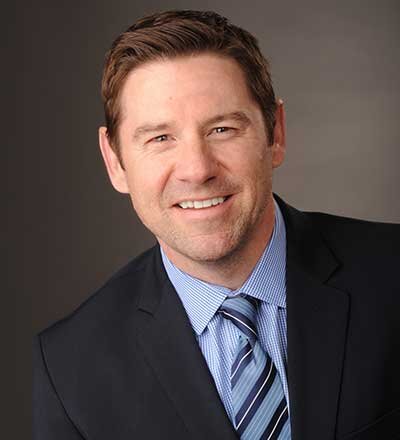
Brian Vaughn
Artistic Director Brian Vaughn has acted and directed at the Festival for over three decades. He has directed such notable plays as 2019’s Hamlet, as well as Henry V, Shakespeare in Love, Peter and the Starcatcher, and many more. This year he is directing Ragtime, and we think you will be interested in what he has to say in this short Q&A.
The Utah Shakespeare Festival: Let’s start with a general question. What is Ragtime about; what are its important themes?
Brian Vaughn: Ragtime is essentially about three intersecting families during the early twentieth century. It is based on the very famous novel by E. L. Doctorow that weaves fictional and historical figures across one of the most progressive decades in American history. It greatly focuses on themes of social, economic, ideological and personal change, injustice, racism, political corruption, resilience, fame, success, and hope.
The Festival: Besides being a novel, a play, and a style of music, ragtime is also a time period around the turn of the twentieth century. Why is this period important, and how will you re-create early twentieth-century New York City on the stage?
Vaughn: The time period is incredibly important as it is a reflection of an era of great progress, industrialism, hope, and aspiration for American citizens just prior to the First World War. To quote novelist E. L. Doctorow: “In a rag, the left hand plays a stride beat, the right a syncopated melody. The stride in Ragtime could be the march of history, an irreversible sequence of events, . . . and the syncopated melody . . . the human life that tries to free itself from the march of history.” That to me encapsulates the metaphorical image and emotional relevance of why Ragtime is important: the people make up the fabric of our history, and how we relate and understand one another is what either propels us or prevents us from our own progression—both individually and collectively. But the most poignant element is that it takes place well over a hundred years ago, and the same horrific events are still happening in our lifetimes. We have sadly only come so far. Much of the re-creation of the time period in our production will be evident in the beautiful work of our designers, as well as the material in and of itself.
The Festival: We can’t discuss this play without talking about the music. At times it seems to become almost another character in the play, or at least a driving force in the story. Why do you think the music is so important?
Vaughn: The score is so beautiful, and in every way encapsulates the early twentieth-century. Along with its delicacy, it has such an immediacy and power and plays on many, many human emotions. Emotions filled with hope, rage, resilience, sorrow, joy while also managing to be incredibly symbolic of our human desire to be heard and understood. I find it incredibly powerful and profound.
The Festival: In your early director’s notes, you write that Ragtime resonates now more than ever, and you quote from the play: “An era exploding. A century spinning.” Would you elaborate on those thoughts?
Vaughn: I think it’s impossible to watch this show without relating to our current enraged world filled with oppression, suppression, marginalization, and great uncertainty. The events encapsulated within this play are so immediate and profound it’s impossible to look away; and yet what you walk away with, in the wake of such incredible tragedy, is hope and the possibility for change despite the great cost for which it comes. The examination of one’s personal drive for justice and identity and the great rage, sorrow, and heartbreak that comes from not being heard, understood, or respected is at the very core of what is happening within our current world. Through Ragtime’s incredibly powerful narrative, my hope is that all of us will recognize our own personal failings and the necessity to remove our prejudices and biases so that we can move toward a more equally respected understanding of our collective humanity.
The Festival: You also write that “our task with this production is to bring the immediacy of Ragtime’s overarching messages of hope, resilience, justice, possibility, change, and, above all else, love into our current collective conscience.” How can a two-hour play can do all that?
Vaughn: I think that’s the magic of the show. It sweeps across time with great alacrity, and its scope, the characters’ journeys, and the emotional core is incredibly rich and multilayered: it stays with you with profound impact.
The Festival: This is a big play with many large characters, locations, themes, and songs. How do you create all that on the stage of the Randall L. Jones Theatre?
Vaughn: The musical is large and sweeping in scale, both physically and emotionally; however, like Shakespeare, we get the most important fragments of the story that keep it moving right along. It’s also an important ensemble piece where each character plays a significant part that is interwoven into a collective plot.
The Festival: As playgoers, what should we watch for in this production that may help us enjoy it and/or understand it more?
Vaughn: I just invite you to come hear it.
Ragtime: The First True American Form of Music
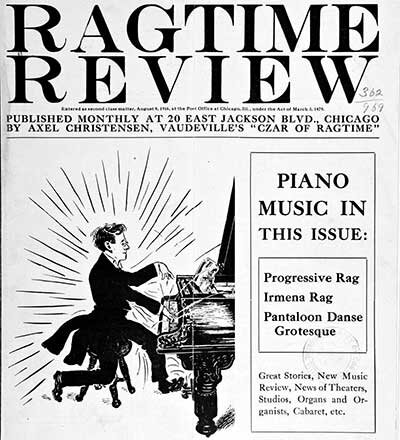
By Kathryn Neves
This season’s musical, Ragtime, is about a lot of things—the struggles of immigrants and the working class, the ignorance of white middle-class America, racial tensions and inequality, and the innovations and lives of several historical figures. It is a group of disparate stories and themes, like an orchestra with many different instruments all playing to the same tune, the same style: ragtime.
Ragtime is sometimes considered the first truly American form of music. Like America itself, ragtime is a synthesis, a melting pot of styles and cultures. It is a combination of classical European music with various African styles. It’s easy to tell when you’re hearing ragtime: you’ll hear a “ragged” beat. That’s where it gets its name. Ragtime is full of syncopated rhythms, or notes played on the off beats. Taking the steady march music popularized by John Philip Sousa some time earlier, and adding ragged African syncopation, creates a style rife with energy and excitement. A syncopated top melody above a steady beat is classic ragtime.
This unique style of music became popular around the turn of the century; early twentieth-century clubs and music halls were brimming with energetic ragtime. However, to say that it was invented at this time would be a mistake. In 1913, Scott Joplin, perhaps the most famous ragtime composer of all time (“The Entertainer,” anyone?), said that there was “ragtime music in America ever since the Negro race has been here, but the white people took no notice of it until about twenty years ago.” Regardless, ragtime emerged as a blended, American style of music—and people loved it.
It’s important to understand the context of ragtime music, especially considering what the musical is all about. For starters, ragtime really emerged from nineteenth-century African American culture. The works of black ragtime composers—such as Scott Joplin and James Scott—became a part of everyday American life, crossing racial divides even in the midst of blatant inequality. All of a sudden, there was energy, life, and movement to music. It was so different from all the other styles that came before it—a true leap in musical progress. From the clubs in Harlem and New Orleans to classical composers in Europe like Debussy and Dvořák, everyone was crazy about ragtime.
So why is this musical called Ragtime? Why is ragtime so important to this story? For one thing, the main character, Coalhouse Walker, is a professional ragtime pianist. For another, ragtime was the defining musical style of the historical period—so much so that historian Russell Lynes called ragtime “a fanfare for the twentieth century.” Then, of course, you can hear ragtime music throughout the play. It’s a musical motif that comes up again and again throughout the production.
But perhaps the reason that ragtime music is so prominent in this story is because it’s so symbolic. The musical Ragtime is the story of a coming together, a joining, a union of different people, experiences, and cultures. It’s a story of progress. It’s a story of movement, diversity, and change. It’s a story of disrupting the status quo.
And what better way to tell that story than through ragtime music?
Who Are the Historical Characters in Ragtime?
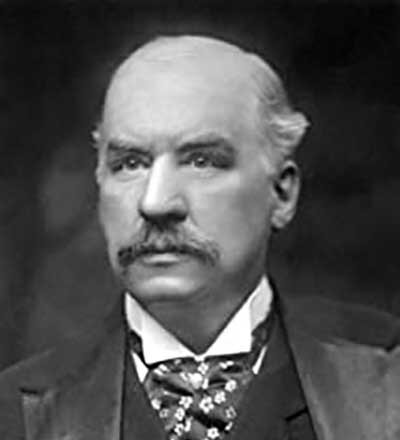
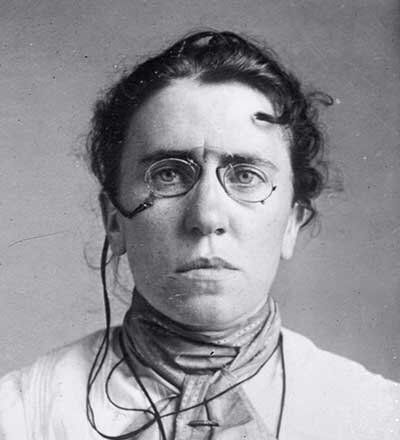
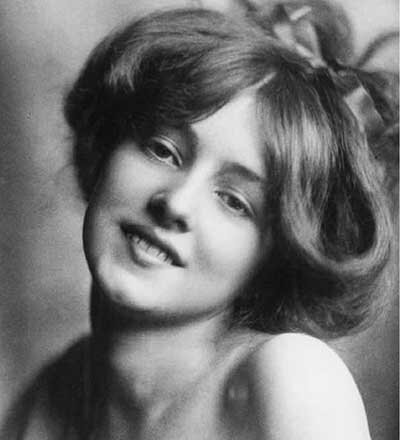
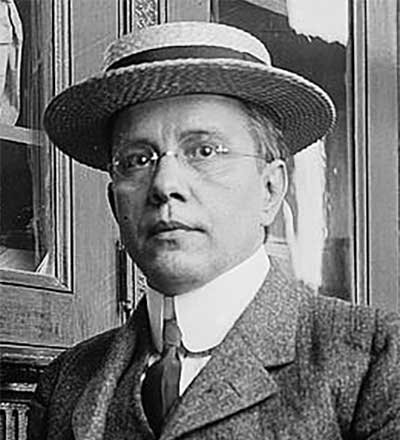
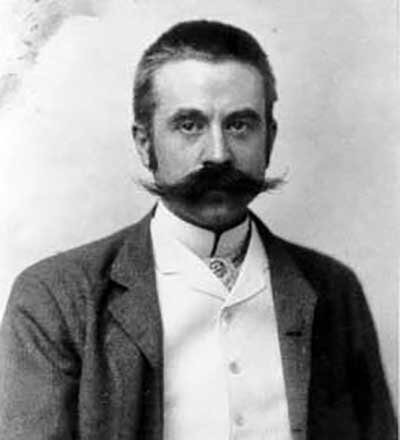
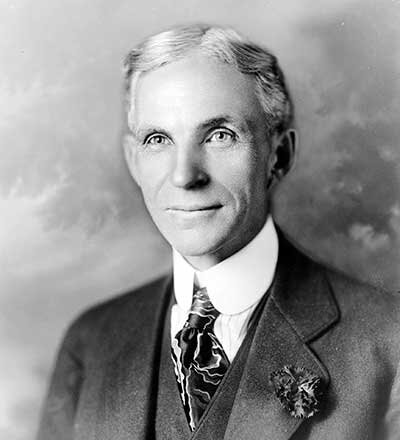
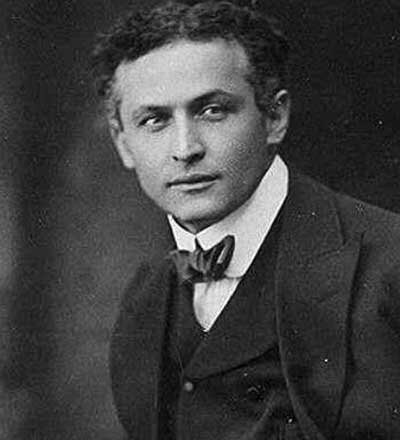
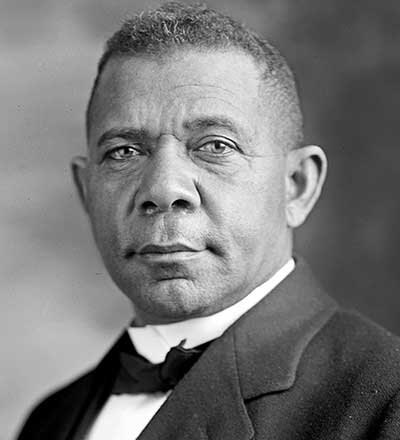
John Pierpont Morgan
Emma Goldman
Evelyn Nesbit
Harry K. Thaw
Stanford White
Henry Ford
Harry Houdini
Booker T. Washington
By Parker Bowring
Ragtime is a passionate musical that tells the story of a wealthy white family, a Jewish immigrant father and daughter, and an African-American ragtime musician—and their journeys towards the illustrious American Dream. As both a history lesson and a sobering look at the American experience, Ragtime includes not only many fictional characters but a number of historical figures that represented the nation at the turn of a century. Below are some of the most notable ones:
John Pierpont Morgan (1837–1913)
As an integral part of the industrial revolution, J.P. Morgan was an American financier and banker who dominated the corporate world of Wall Street in the Gilded Age of the United States. Born to Junius Spencer Morgan and Juliet Pierpont he was raised in Hartford, Connecticut. Working with his father, Morgan formed the banking house Drexel, Morgan and Company. Following an economic crash in 1893, Morgan turned to railroads and marketing U.S. government securities. As an avid collector of books and art, he had many pieces in his personal library in New York City on 36th Street. It is at this location where Coalhouse and his gang threaten to destroy the Morgan collections. His monopolistic business practices stand in stark contrast to the politics of Emma Goldman and Younger Brother who represent the working class Morgan was accused of oppressing.
Emma Goldman (1869–1940)
As an avid and passionate anarchist, Goldman was critical in leading leftist activism in the early twentieth century. Russian-born, she immigrated to the United States in 1885 where she attended socialist meetings before moving to New York City. There she met Russian anarchist Alexander Berkman and plotted to kill the industrialist, Henry Clay Frick. She was jailed and deported to the USSR. Goldman eventually moved to Canada where she aided anarchists during the Spanish Civil War. Mother’s shifts in beliefs and her realization of her self-worth, are influences by Goldman.
Evelyn Nesbit (1885–1967) and Harry K. Thaw (1871–1947)
As a model and chorus girl, Nesbit grew up in the limelight of New York City’s elite. Deemed a “Gibson Girl” after modeling for illustrator Charles Dana Gibson, Nesbit attracted many wealthy socialite suitors, including architect Stanford White. White and Nesbit had a brief love affair before Nesbit attracted the wealthy Pittsburgh heir, Harry K. Thaw, worth an estimated $40 million. They married in 1905, and Thaw became insanely jealous of and obsessed with Nesbit’s affair with White. Thaw shot White at point-blank on the roof of Madison Square Garden, an act giving rise to headlines calling it the “Crime of the Century.” During his trial, Thaw pleaded insanity and spent the rest of his life in and out of asylums.
Stanford White (1853–1906)
As a successful and wealthy American architect, White was famous for designing many houses for the rich elite of New York. He was co-founder of one of the busiest architect firms in the country. He and his partners spearheaded many famous buildings in and around New York. Of those is the well-known Washington Square Arch, first built to be temporary but then made permanent after gaining so much popularity. Several of his other works include the New York Herald Building (1892), the Madison Square Presbyterian Church (1906), and Madison Square Garden (1891). His life came to a tragic end after he was shot to death by Harry K. Thaw over his former affair with Evelyn Nesbit.
Henry Ford (1863–1947)
As the father of the assembly line and Ford Motor Company, Henry Ford is one of the most well-known names in American history. As the son of an Irish immigrant and Michigan farmer, Ford dropped out of school at the age of fifteen to be an apprentice at a machinist’s shop in Detroit. Honing his skills in a makeshift shop on his father’s farm, Ford eventually rose to become the chief engineer of Edison Company. He then formed his own automobile company in 1899: Ford Motor Company. He introduced the Model T in 1908, and in 1913 he created the revolutionary assembly-line. He is responsible for altering the American lifestyle forever, putting automobiles within reach of the middle class. In the musical, Coalhouse Walker’s purchase of one of Ford’s automobiles stands as a statement of his claim to participate in the American Dream. The relationship to this car—and the dream it symbolized—ultimately becomes a catalyst for the tragic actions that unfold in the play.
Harry Houdini (1874–1926)
Born the son of a Hungarian rabbi who immigrated to the US, Houdini’s real name is Erik Weisz. Houdini is celebrated for his heart-stopping acts of escape and magic. He began his career as a circus trapeze artist and graduated to vaudeville after moving to New York in 1882. His wife, Beatrice, was his stage assistant in many of his hair-raising stunts. He became renowned for his nearly impossible escapes from milk cans, coffins, handcuffs, prison cells, and ropes. His most famous dance with death was titled, the Chinese Water Torture Cell, which involved him immersed head downward in a large water-filled tank, his feet secured in stocks. He toured his magic and escapes all over the world, with many of his illusions still practiced today. True to his life of mystery, he died on Halloween night from peritonitis.
Booker T. Washington (1856–1915)
As the first president of the Tuskegee Institute, Booker T. Washington was born a slave but fought for his freedom and became an educator, reformer, and spokesman for African-Americans. He preached that education, patience, and literacy would lead African Americans out of poverty and win them equal rights. He moved to West Virginia and worked in a coal mine before working as a janitor at the Hampton Institute. It was there he began his education before moving to Harvard University. Washington opened the Tuskegee Institute with one teacher, fifty students, two small buildings, no equipment, and only $2,000. He became extremely influential, and later advised Presidents William Howard Taft and Theodore Roosevelt. In Ragtime, he is a mediator between races and the various factions in the play.
E. L. Doctorow: The Man behind Ragtime

E. L. Doctorow
By Kathryn Neves
In the twenty-five years since it was first staged, Ragtime has become a much beloved and produced musical. It swept the 1998 Tony Awards, nominated for thirteen and winning four—including Best Book of a Musical and Best Original Score. Some consider Ragtime to be the Great American Musical for its portrayal of the cross-section of American life at the turn of the century; most exciting, it’s the featured musical for the sixtieth anniversary season at the Utah Shakespeare Festival. Ragtime’s moving score and sweeping story captivate the hearts of nearly everyone who sees it. However, not everyone knows that this musical began as a novel. Ragtime, and the author behind it, is responsible for one of the most celebrated musicals in America.
Ragtime was written by E. L. Doctorow and published in 1975. With accessible yet intricate prose, Doctorow weaves the stories of a white, upper middle-class family; a black family facing discrimination and oppression; and an impoverished Jewish immigrant family. With this melting pot of cultures and ideas, Doctorow paints a picture of life during one of the most tumultuous times in American history. Intertwined with these families are a multitude of important historical figures; Sigmund Freud, Harry Houdini, Evelyn Nesbit, J.P. Morgan, Emma Goldman, and Booker T. Washington all play significant roles in the story. This is perhaps where the musical diverges from the novel the most; the novel delves deep into the lives and personalities of the historical figures, while the musical focuses in on the development of the fictional characters of the story.
E. L. Doctorow was not only a writer, but an editor and a professor. In fact, he was a visiting professor at the University of Utah in 1975. However, Doctorow is known most widely for his works of historical fiction. He is considered to be one of the greats of contemporary literature: he wrote in a variety of styles and genres, but largely focused on history. He was the go-to author for historical fiction. It’s no wonder, then, that he focused so much on the history in Ragtime. It was important for him to make these larger-than-life figures accessible; he wanted his readers to understand that these monoliths were real people. By placing them on the same level as his down-to-earth original characters, Doctorow made the likes of Harry Houdini and Booker T. Washington seem all the more real and relatable. It’s almost like Ragtime was the Hamilton of its time!
Novelist Jay Parini said that Doctorow “showed us again and again that our past is our present, and that those not willing to grapple with ‘what happened’ will be condemned to repeat its worst errors.” It’s no wonder that Ragtime rings so true today! In our tumultuous times, the stories of Coalhouse Walker and Tatah and Mother and Father feel more relatable and real than ever. Even though the musical is a bit different from Doctorow’s novel, they both tell a universal story of equality, tolerance, and the fight for justice in an America that is not so distant from our own.
Celebrating Black History Month



As Rosaline in Love’s Labour’s Lost, 1969.
As Capulet’s Wife in Romeo and Juliet, 1968
As Courtesan in The Comedy of Errors, 1972.
Charlene Bletson broke a lot of ground at the Utah Shakespeare Festival.
The first black actor at the Festival, she came to Cedar City during the summers of 1968 and 1969 while she was a student the University of California–Riverside. She performed Capulet’s Wife in Romeo and Juliet, Phebe in As You Like It, Nerissa in The Merchant of Venice, Titania in A Midsummer Night’s Dream, and Rosaline in Love’s Labour’s Lost.
After receiving her master’s degree in acting from Yale University in 1972, she returned to the Festival to play Paulina in The Winter’s Tale, Goneril in King Lear, and Courtesan in The Comedy of Errors. This Utah association led to her joining the University of Utah theatre faculty in 1973.
Her last work at the Festival was in 1977 when she returned to direct Romeo and Juliet, as the first black director.
R. Scott Phillips, who was the public relations director at the Festival in those early years, said that Bletson was a wonderful person, actor, and director. “She just commanded the stage,” he said. “She came on that stage, and she had a persona about her that was so commanding that she took over the stage. It was just electrifying.”
He also remembered that she “had an enormous, big smile, and her eyes just lit up when she smiled. She would get so excited about her work.”
Sadly, Bletson was born with a congenital heart defect, and she left Utah for New York in 1986 after doctors warned her that Utah’s high elevation was worsening her heart condition. She was performing Hedda G, a new play based on Ibsen’s Hedda Gabler, at a small theatre in the East Village when she collapsed and died. She was 44.
Questions and Answers with Director Cassie Abate

Cassie Abate
This will be Cassie Abate’s first time directing at the Utah Shakespeare Festival, as she takes the helm of the hilarious operetta The Pirates of Penzance as part of the 2021 season. She is currently the head of musical theatre dance at Texas State University and has directed and choreographed at numerous theatres across the country, including Connecticut Repertory Theatre, ZACH Theatre, Red House Arts Center, Barrington Stage, and NY Musical Theatre Festival. She is also a co-founder of Educators for Equity in Theatre Arts Initiative.
The Utah Shakespeare Festival: The Pirates of Penzance (and playwrights Gilbert and Sullivan) are extraordinarily popular, even more than 140 years since the play premiered. Why do you think this is so?
Cassie Abate: Gilbert and Sullivan operettas are the pinnacle of parody and satire. Words that come to mind include whimsical, funny, bright, witty, playful, grand, and endearing. They expertly pair farcical situations with extremely intricate and articulate lyrics. The equal lampooning and embracing of Victorian society mirrors the appeal of reality television today. Many topics satirized are universal and still relevant. The Pirates of Penzance was meant to parody grand opera, and yet the luxurious score rivals any of the great operas. It is both a burlesque and a love letter. The combination of comedy, eloquence, and intention continues to delight audiences.
The Festival: The Pirates of Penzance is usually referred to as an operetta. Can you tell us what that term means? What makes it different from an opera or a musical?
Abate: Operetta, or comic opera, really serves as the link between opera and musicals. Operettas are usually comical and satirical in natural and contain large portions of dialogue between sung musical numbers. Operetta laid the groundwork for twentieth century American musical theatre.
The Festival: In your Preliminary Director’s Concept Statement you say that none of the characters in the play should feel like a caricature. In a play that is full of exaggerated personalities and actions, how do you avoid that?
Abate: Each character in the piece honestly and fully pursues their goals with a “life or death” urgency as the heightened stakes draw them into action. The comedy is then derived from the topsy-turvy nature of the situations in which they find themselves.
The Festival: The setting of The Pirates of Penzance (the heart of Queen Victoria’s reign in 1870s England) is a very different time and place than 2021 America. Can the play have meaning for us today?
Abate: No matter the time period it was written, the ideas of hypocrisy and corruption within governments and class systems still rings true. The dangers of following a statement or principle at face value that has been taken out of context can also be applied to social media and current news consumption. I also am interested in exploring the show from the perspective that it is the women of the piece, from a nursery maid all the way up to the queen, that hold the power and agency to provoke action as well as create resolution.
The Festival: A lot happens in this play, and very quickly; but do you think there are one or two overarching themes? What are they?
Abate: The Pirates of Penzance is subtitled, “The Slave of Duty.” The piece examines how it can be detrimental to blindly follow a literal sense of duty with no credence to morality, conscience, context, or consequence. It also tears down the walls of stereotypes as none of the characters fit the mold assumed by their position. The rough pirates are sentimental. The brave policemen are scaredy cats. The major general actually has a very limited military knowledge.
The Festival: As playgoers, what should we watch for in this production that may help us enjoy it and/or understand it more?
Abate: This production expands the role of dance in the storytelling. Keep your eyes peeled for leaping pirates and tap-dancing policemen.
The Festival: This is your first time directing at the Utah Shakespeare Festival. What attracted you to the Festival?
Abate: There are so many things that drew me to working at the Utah Shakespeare Festival. One is the incredible artistic team and the true sense of collaboration that is evident in the quality of the work. The other is the connection of the theatre to the community and a dedication to uphold and support a vital artistic institution.
The Festival: Besides theatre business, what is the one thing you plan on doing while in Cedar City?
Abate: I am very excited to go hiking in the area with my family.
The Festival: Is there anything else you would like to add?
Abate: I am so honored to be a part of the 2021 summer season and cannot wait to be safely back in a rehearsal room soon!


